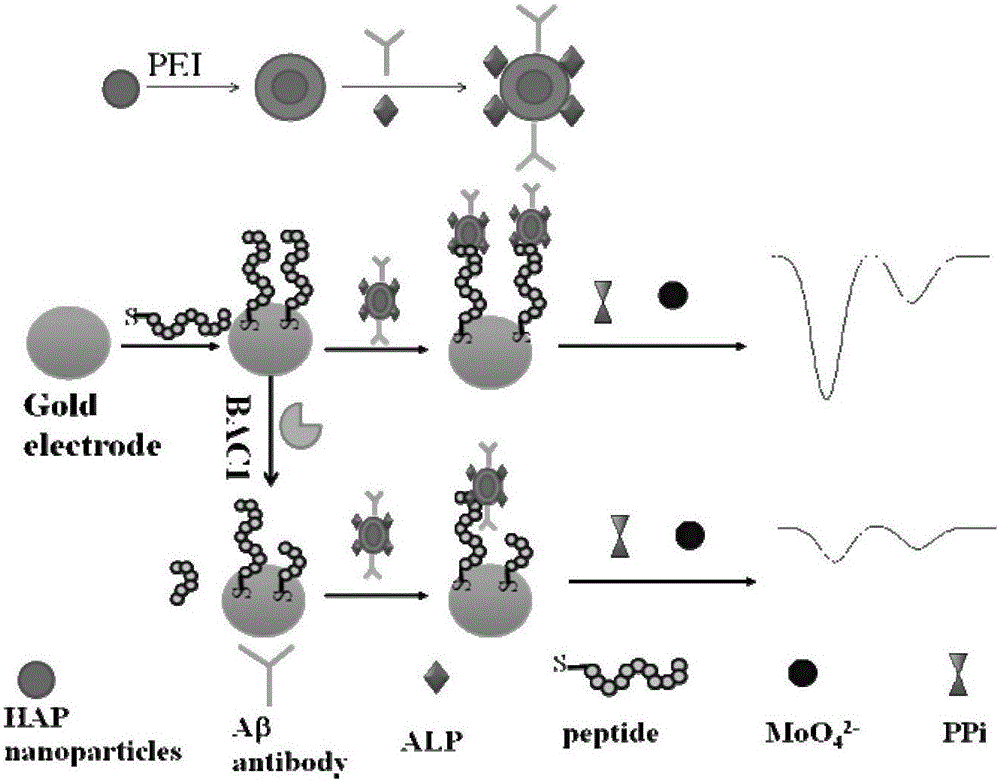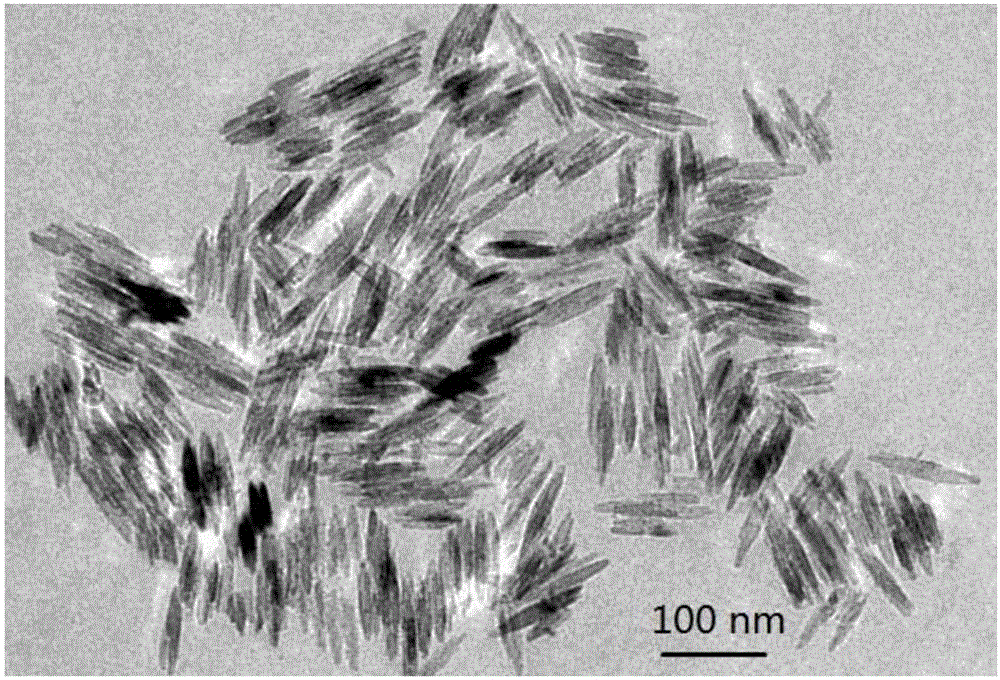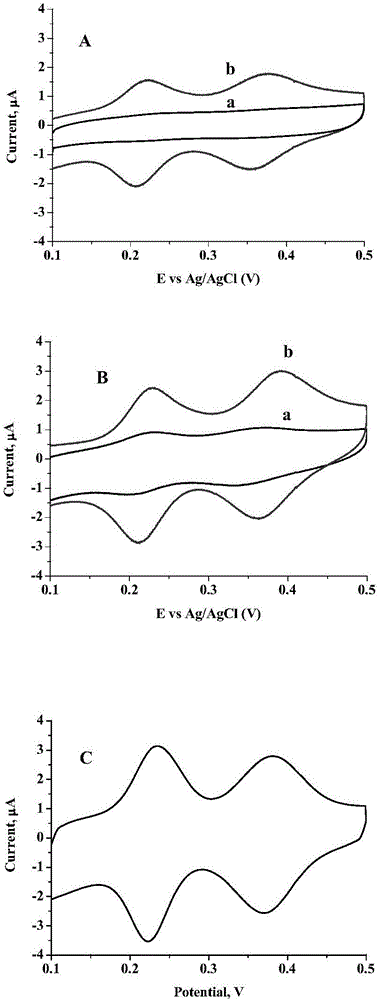Hydroxyapatite-based electrochemical probe construction method and method for determining activity and inhibition property of BACE1
A hydroxyapatite, chemical probe technology, applied in the field of biosensing, can solve the problems of low sensitivity and complicated operation
- Summary
- Abstract
- Description
- Claims
- Application Information
AI Technical Summary
Problems solved by technology
Method used
Image
Examples
Embodiment 1
[0065] A gold electrode with a diameter of 2 mm was placed in a layer containing 0.05 μm Al 2 o 3 Polish on a polishing cloth, rinse the polished electrode with secondary water, and then ultrasonically clean it with absolute ethanol and secondary water for 5 minutes to remove the polishing powder attached to the surface of the electrode, and then dry it with nitrogen. Put the treated gold electrode, Ag / AgCl reference electrode and platinum wire counter electrode together into the reaction cell containing 5mM potassium ferricyanide solution, and perform cyclic voltammetry scanning at a voltage of -0.1-0.6V. Set the scanning speed to 0.1V s -1 ,
[0066] The potential difference was 85mV, indicating that the surface of the gold electrode was cleaned. Take 5 μL of the polypeptide (CKTEEISEVNLDAEFRHDSGY) with a concentration of 4 μM and drop it on the surface of the electrode to react for 12 hours.
[0067] After the electrode is washed, take 5 μL of the peptide with a concent...
Embodiment 2
[0070] Because hydroxyapatite contains a large amount of phosphate, and alkaline phosphatase can hydrolyze sodium pyrophosphate into phosphate, and the phosphate will react with Na 2 MoO 4 The formation of phosphomolybdate precipitation in an acidic environment produces dual electrochemical signals, so the dual-signal mode was first tested. Drop 1mg / mL hydroxyapatite solution on the surface of the electrode with 6mM Na 2 MoO 4 reaction, followed by 0.5M H 2 SO 4 It is an electrolyte, within the range of 0.1 ~ 0.5V, the frequency of 15HZ sweeps the square wave voltammetry curve. Take 100μM sodium pyrophosphate solution and drop it on the surface of the electrode with Na 2 MoO 4 reaction, and reacting sodium pyrophosphate first with alkaline phosphatase and then with Na 2 MoO 4 reaction, and then likewise in 0.5M H 2 SO 4 Sweep square wave voltammetry curve in solution. Finally, the prepared electrochemical probe was mixed with Na 2 MoO 4 reaction, also at 0.5M H 2...
Embodiment 3
[0072]Put the blank gold electrode and the gold electrode modified by the peptide in the 5mM potassium ferricyanide solution reaction cell, and perform cyclic voltammetry scanning at the voltage of -0.1-0.6V, and characterize the modification of the peptide on the electrode surface by the change of the electrode peak current . Add 0 and 2.5 U / mL BACE1 solutions dropwise on the surface of the two polypeptide-modified electrodes to react for 1 hour, rinse the electrodes and then drop the hydroxyapatite probe solution on the electrode surface to react for 1 hour; then add 100 μM pyrophosphate dropwise The sodium solution was reacted for 40 minutes; finally, Na was added dropwise on the surface of the electrode 2 MoO 4 , reacted for 40 minutes, and then in 0.5M H 2 SO 4 Sweep the square wave voltammetry curve in the solution, detect it by voltammetry, and test the feasibility of the method according to the obtained corresponding peak current value.
[0073] Similarly, 0 and 2....
PUM
 Login to View More
Login to View More Abstract
Description
Claims
Application Information
 Login to View More
Login to View More - R&D
- Intellectual Property
- Life Sciences
- Materials
- Tech Scout
- Unparalleled Data Quality
- Higher Quality Content
- 60% Fewer Hallucinations
Browse by: Latest US Patents, China's latest patents, Technical Efficacy Thesaurus, Application Domain, Technology Topic, Popular Technical Reports.
© 2025 PatSnap. All rights reserved.Legal|Privacy policy|Modern Slavery Act Transparency Statement|Sitemap|About US| Contact US: help@patsnap.com



